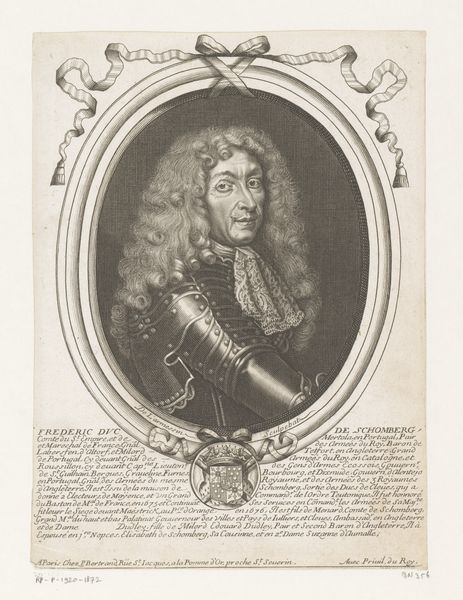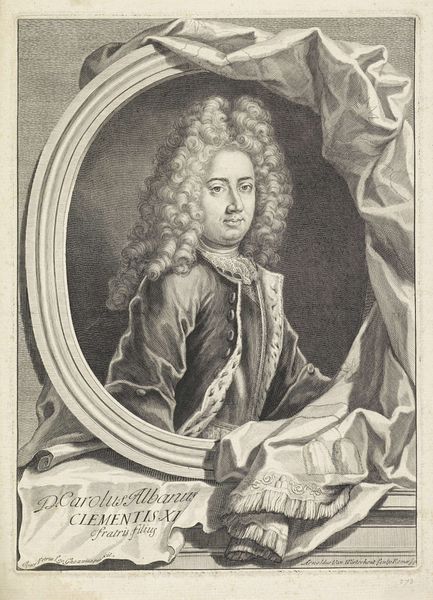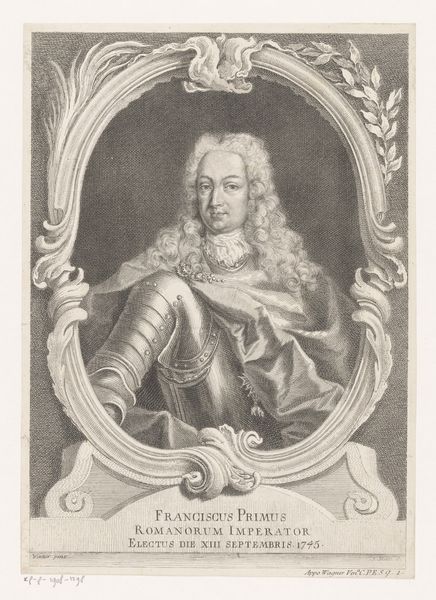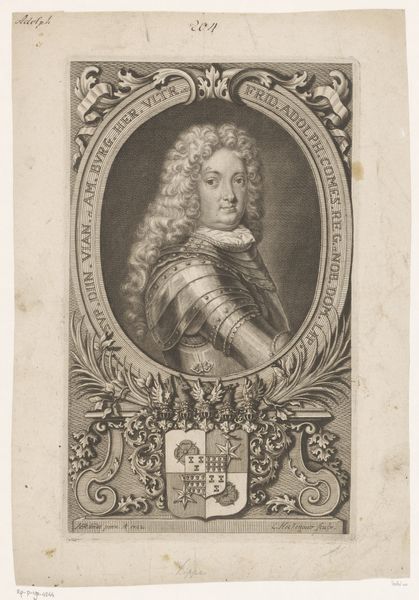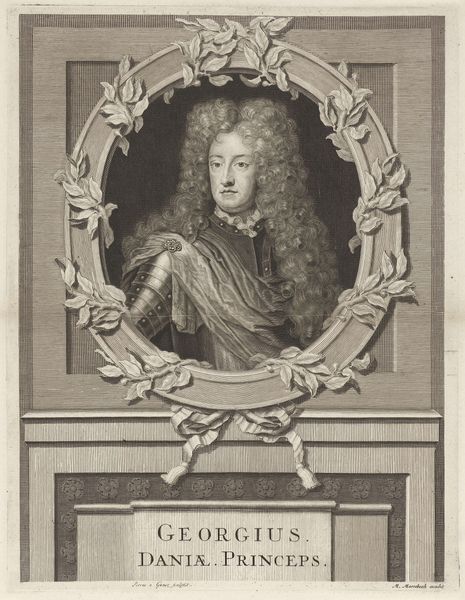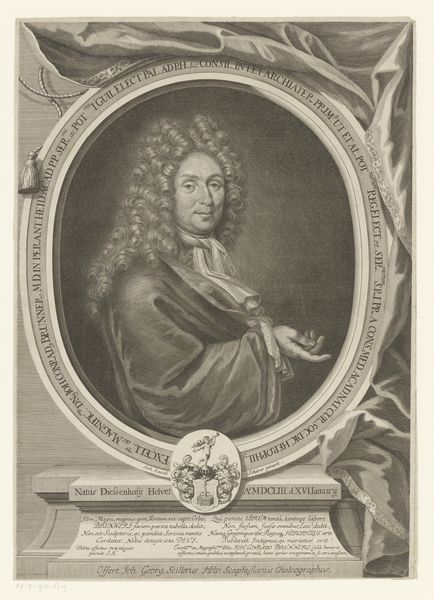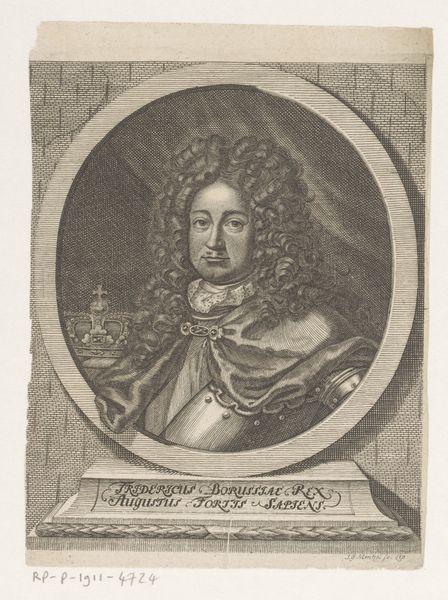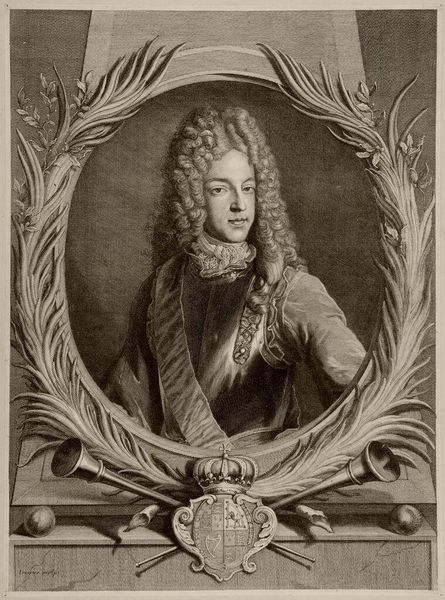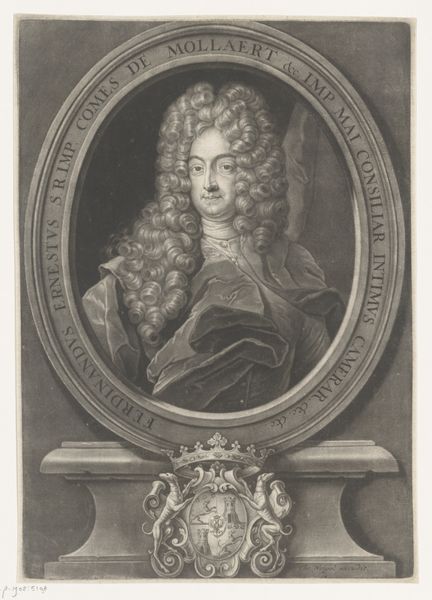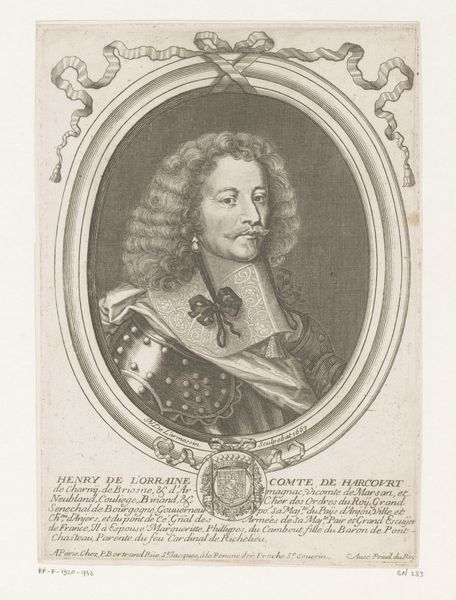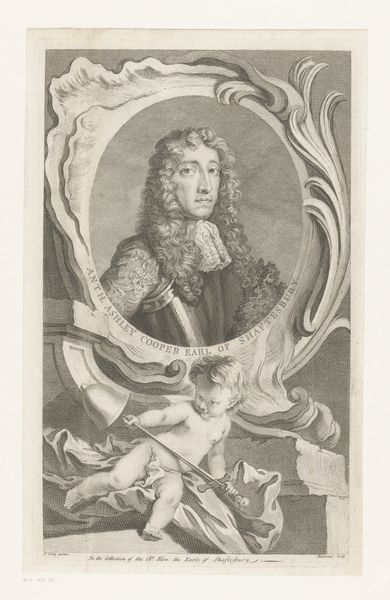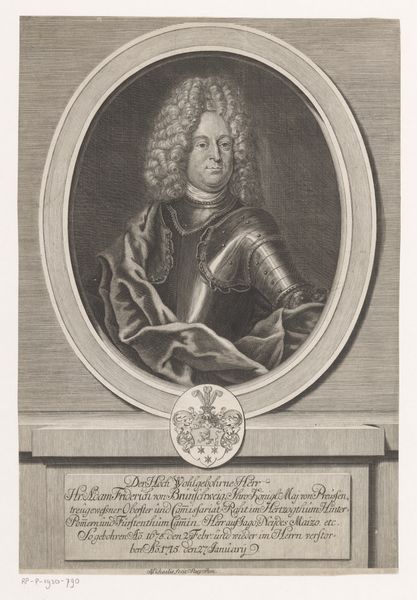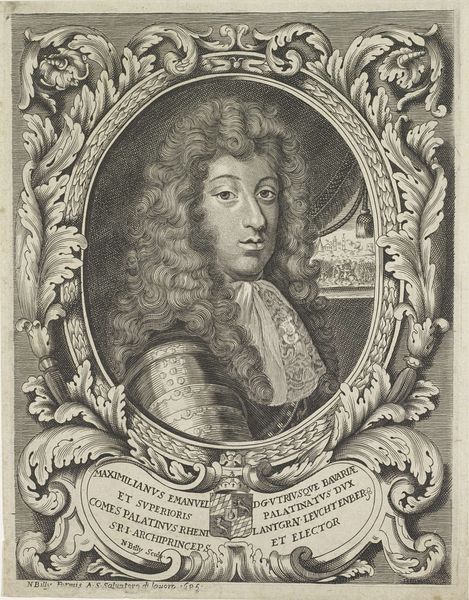
engraving
#
portrait
#
baroque
#
old engraving style
#
history-painting
#
engraving
Dimensions: width 268 mm, height 352 mm
Copyright: Rijks Museum: Open Domain
This print of George II as Prince of Wales was made by Pieter van Gunst, sometime around the turn of the 18th century. It's an engraving, meaning the image was incised into a metal plate, which was then inked and used to make impressions on paper. The crisp lines of the image are a testament to Van Gunst's skill with the burin, the tool used to carve into the metal. The texture and tone are built up through careful hatching and cross-hatching. Look closely at the armor, the drape, and even the Prince's hair, and you’ll see this laboriously detailed workmanship. Prints like these were crucial to image distribution. Before photography, engraving was the primary means of circulating portraits and other imagery. As such, this artwork allows us to consider the labor involved in crafting and distributing images. It's a reminder that even seemingly straightforward portraits can be seen as complex objects of material culture.
Comments
No comments
Be the first to comment and join the conversation on the ultimate creative platform.
